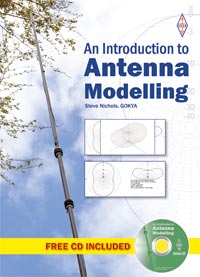I've now updated my hourly UK HF Propagation Predictions maps for the rest of 2016.
You can view the charts using the link on the right or at infotechcomms.co.uk/propcharts/
These take into account the latest smoothed sunspot numbers from NOAA/NGDC.
We continue to see a steady decline in sunspot activity as we fall away from the peak of solar cycle 24. Twelve months ago the solar flux index peaked at 163 in May. This month it has struggled to exceed 100 and is currently 94.
Coupled with this, we have suffered quite badly from the effects of plasma from solar coronal holes. These are areas of the sun with an open magnetic field that allows plasma to escape.
If these coronal holes are earth-facing the result can be an elevated K index as the plasma from the high-speed solar wind stream impacts the earth, especially if it has a negative or south-facing magnetic field, which couples more easily.
A high K index is usually a sign of poor HF conditions, with noisy bands and depressed maximum usable frequencies. Any path over the poles is also badly affected.
This can also lead to aurora, which while not being visible in the summer, can lead to openings on VHF.
You can view the charts using the link on the right or at infotechcomms.co.uk/propcharts/
These take into account the latest smoothed sunspot numbers from NOAA/NGDC.
We continue to see a steady decline in sunspot activity as we fall away from the peak of solar cycle 24. Twelve months ago the solar flux index peaked at 163 in May. This month it has struggled to exceed 100 and is currently 94.
Coupled with this, we have suffered quite badly from the effects of plasma from solar coronal holes. These are areas of the sun with an open magnetic field that allows plasma to escape.
If these coronal holes are earth-facing the result can be an elevated K index as the plasma from the high-speed solar wind stream impacts the earth, especially if it has a negative or south-facing magnetic field, which couples more easily.
A high K index is usually a sign of poor HF conditions, with noisy bands and depressed maximum usable frequencies. Any path over the poles is also badly affected.
This can also lead to aurora, which while not being visible in the summer, can lead to openings on VHF.
The RSGB Propagation Studies Committee is also pleased to be able to present its latest HF propagation prediction tool, which is currently hosted at www.predtest.uk
This is still being developed and uses the newer ITURHFPROP software as its backend, rather than VOACAP.
We encourage amateurs to use the system, which can also be used for point-to-point predictions using a prototype tool called 'Proppy'.
Gwyn G4FKH, who is project manager for the new system, welcomes feedback. The goal is for the whole system to be moved to the RSGB website once finished.











I saw the aurora quite clearly at midnight on June 21, 2015. So it is visible, even from 53N!
ReplyDelete